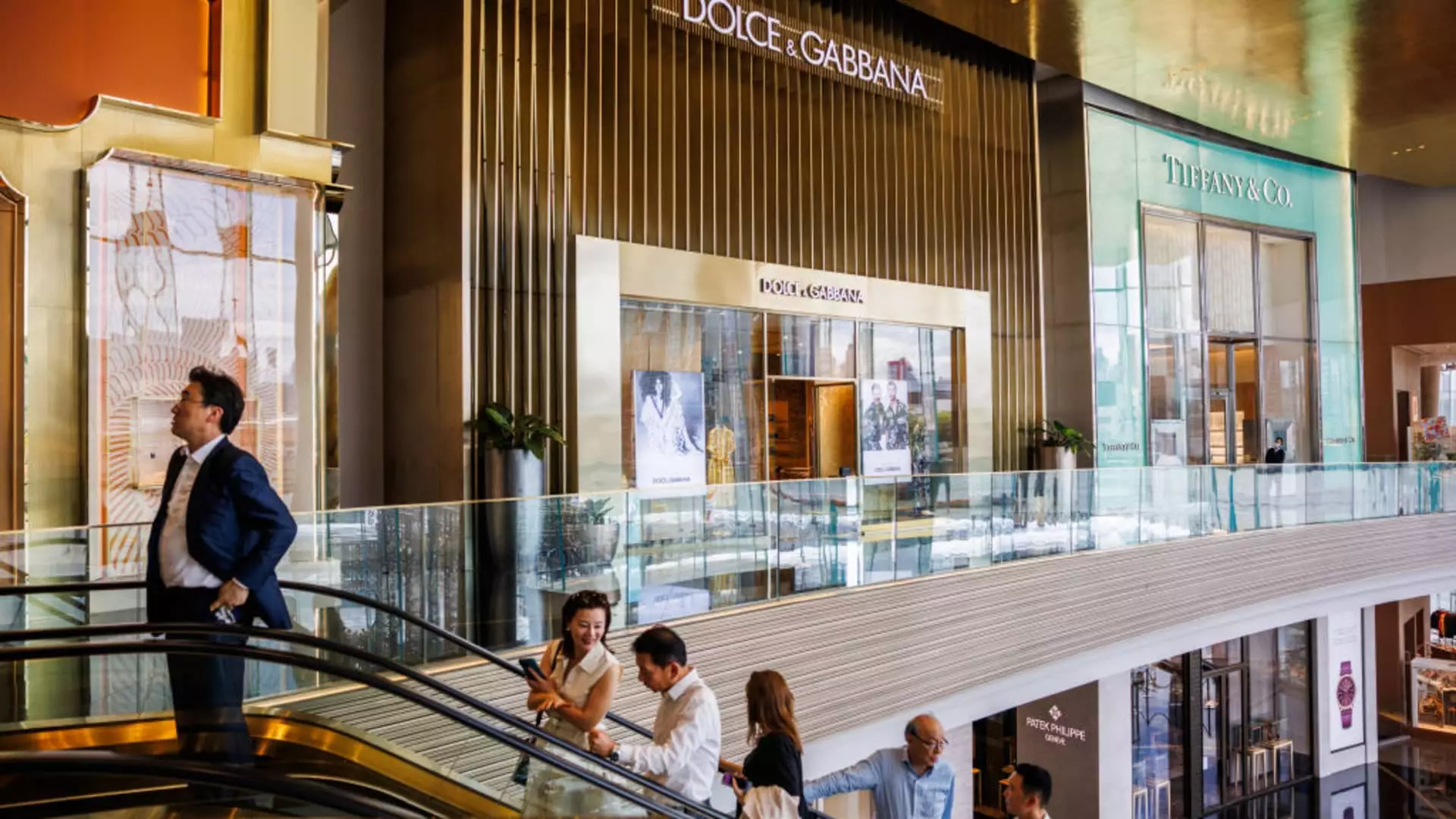The personal luxury goods market is poised for its first substantial decline since the aftermath of the Global Financial Crisis, according to the latest findings from Bain & Company. The anticipated downturn is largely driven by macroeconomic instability, with a significant economic slowdown in China adversely affecting consumer behavior. Personal luxury items—including high-end fashion, accessories, jewelry, and cosmetics—have witnessed a notable decline in consumer interest, marking the first demand drop in 15 years, excluding the impacts of the Covid-19 pandemic.
As inflation raises living costs and consumer expectations shift, luxury brands find themselves struggling to maintain their profitability. The report indicates that the personal luxury sector may contract by approximately 2% in 2024, a concerning forecast given that it follows an extensive period of growth. Notably, the total luxury spending is expected to stabilize around €1.5 trillion (approximately $1.59 trillion), despite growth within certain segments such as travel, fine wines, and luxury automobiles.
The Chinese market’s demand for luxury goods has been notably weaker compared to previous years, raising alarm bells across the industry. Several leading luxury brands, including LVMH, Kering (parent company of Gucci), and Burberry, have reported revenue shortfalls attributed to this downturn. Even Richemont, previously characterized by robust sales, has acknowledged a 1% dip for the first half of its fiscal year, citing declining sales primarily linked to weaker demand from China.
Bain & Company elaborates that a dwindling consumer confidence in mainland China is exacerbating this issue; spending patterns have shifted, leading to an overall decline in domestic luxury consumption. While there are cautious predictions for a slow recovery by 2025, there remains a sense of unease around the sector’s long-term prospects in this crucial market.
Despite the turbulence in China, luxury markets in Europe and the United States are showing signs of a slight recovery, assisted by favorable currency fluctuations in regions like Japan. The report highlights that specific sectors within the luxury market have continued to grow, with luxury travel emerging as a standout area of interest. Shoppers are increasingly prioritizing experiences over tangible goods, leading them to indulge in travel-related expenditures, social gatherings, and wellness activities.
Moreover, smaller luxury purchases, such as designer eyewear and beauty products, have also been on the rise. This trend suggests a shift in consumer behavior, with individuals opting for “little luxuries” in the face of uncertainty rather than splurging on major purchases. The report’s findings underscore the need for luxury brands to rediscover and adapt to this evolving consumer appetite.
The luxury sector is faced with a unique challenge: retaining a consumer base that has become increasingly fickle and discerning, particularly among younger generations such as Gen-Z. A striking figure noted in the report states that nearly 50 million luxury consumers have either disengaged from the market or been economically forced out over the past two years. This drastic shift highlights the urgent need for luxury brands to recalibrate their strategies and redefine their value propositions.
Claudia D’Arpizio, a partner at Bain & Company, emphasizes that creativity and meaningful engagement will be critical for brands aiming to reattract disenchanted customers, especially among younger demographics. To succeed, brands must forge deeper connections with consumers, emphasizing personal interactions that resonate on an individual level. A strategic pivot towards serving the preferences of a younger audience, including innovative storytelling and unique offerings, may be essential to reignite interest and loyalty in the luxury market.
While the luxury goods market encounters unprecedented challenges, particularly from the Chinese economy, signs of gradual recovery in other regions offer a glimmer of hope. Brands that pivot towards consumer experiences and streamline their approaches to foster deeper connections are likely to find new avenues for success. By embracing innovation and focusing on customer engagement, luxury brands can navigate the uncertainties of 2024 while positioning themselves for future growth in a shifting landscape. The coming years will undoubtedly test the adaptability and resilience of the luxury sector, but with strategic foresight, there remains potential for renewal and revitalization.

